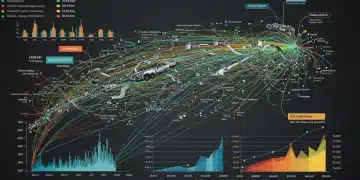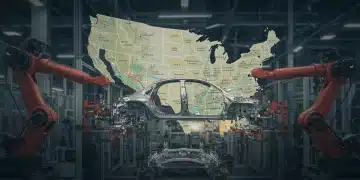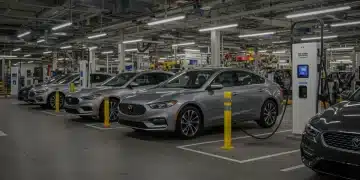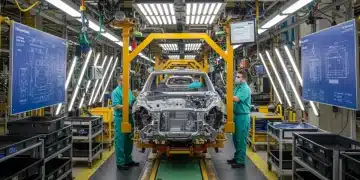US Tariffs on Auto Parts 2025: Financial Impact Analysis
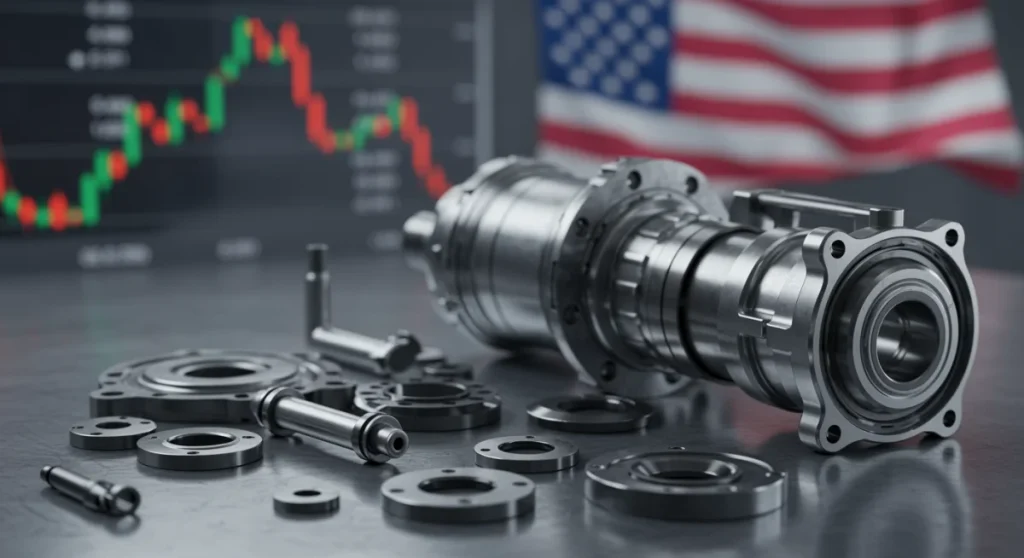
The latest analysis on US auto parts tariffs for 2025 indicates a significant financial upheaval for the American automotive industry, impacting manufacturers, supply chains, and ultimately, consumer costs nationwide.
The impending implementation of new US auto parts tariffs in 2025 is setting the stage for a profound transformation within the American automotive sector. This development demands immediate attention, as it promises to ripple through manufacturing processes, supply chains, and consumer markets, presenting both challenges and opportunities for stakeholders across the nation.
Understanding the New Tariff Landscape for 2025
As 2025 approaches, the automotive industry braces for new US tariffs on imported auto parts, designed to bolster domestic manufacturing and reduce reliance on foreign suppliers. These tariffs, which are still being finalized, represent a strategic shift in trade policy, aiming to re-shore critical production capabilities and enhance national economic security. However, the immediate consequence for many businesses will be a re-evaluation of their sourcing strategies and operational costs.
The proposed tariffs target a broad range of components, from intricate electronic systems to foundational mechanical parts. Industry experts, including those from the American Automotive Policy Council, indicate that the scope of these tariffs could encompass up to 60% of the value of imported auto parts. This broad application is intended to create a comprehensive incentive for domestic production, but it also means that few segments of the automotive supply chain will remain untouched by the changes.
Key Tariff Provisions and Their Scope
- Targeted Components: Tariffs are expected to apply to a wide array of parts, including engine components, transmissions, electronic modules, and interior trim.
- Ad Valorem Rates: Initial reports suggest ad valorem duties ranging from 10% to 25% on specified imported parts, significantly increasing their landed cost.
- Implementation Timeline: While specific dates are pending, the tariffs are slated for phased implementation throughout 2025, allowing some time for industry adjustment.
The underlying rationale for these tariffs, according to statements from the Department of Commerce, centers on national security and economic resilience. By reducing dependence on potentially unstable foreign supply chains, the US aims to secure its automotive manufacturing base. Yet, this policy also introduces new financial variables that companies must navigate, potentially leading to increased costs and altered market dynamics.
Ultimately, a clear understanding of these new tariff provisions is paramount for companies to effectively plan and mitigate potential financial risks in the coming year. The shift will necessitate proactive measures and a keen eye on policy developments.
The Direct Financial Impact on Manufacturers
The direct financial impact of new US auto parts tariffs on manufacturers will be substantial, primarily through increased input costs. Automotive companies, both domestic and foreign-owned, rely heavily on a global supply chain to source components at competitive prices. These tariffs will immediately inflate the cost of imported parts, compelling manufacturers to either absorb these costs, pass them on to consumers, or seek alternative, often more expensive, domestic suppliers.
For US-based manufacturers, the tariffs could lead to a dual effect. While the intention is to encourage domestic sourcing, the immediate reality is that many specialized parts are not readily available or cannot be produced at a competitive cost within the US. This forces manufacturers to pay higher prices for imported goods, directly impacting their profit margins and operational budgets. Smaller manufacturers, with less leverage over suppliers and thinner margins, could be particularly vulnerable to these cost escalations.
Cost Pressures and Profit Margins
- Increased Raw Material Costs: Tariffs on steel, aluminum, and other materials used in auto parts production will indirectly raise costs even for domestically produced components.
- Higher Component Prices: Direct tariffs on imported finished auto parts will lead to an immediate increase in the cost of goods sold for manufacturers.
- Reduced Profitability: Unless costs can be fully passed on, manufacturers face significant pressure on their net profit margins.
Major automotive players like General Motors and Ford have already expressed concerns regarding the potential for these tariffs to erode their competitiveness and ability to invest in future technologies. According to a recent report by the Alliance for Automotive Innovation, a 25% tariff on all imported auto parts could add thousands of dollars to the cost of a new vehicle, significantly dampening consumer demand. Manufacturers will need to meticulously analyze their supply chains to identify the most cost-effective strategies for navigating this new economic landscape.
In essence, manufacturers must prepare for a period of intensified cost management and strategic re-evaluation. The financial health of many automotive firms will depend on their agility in adapting to these tariff-induced changes.
Supply Chain Disruptions and Re-shoring Challenges
One of the most significant financial implications of the new US auto parts tariffs for 2025 will be the widespread disruption to established global supply chains. For decades, the automotive industry has optimized its supply networks for efficiency and cost-effectiveness, often relying on just-in-time delivery of components from international suppliers. These tariffs will fundamentally challenge this intricate system, forcing companies to re-evaluate and potentially reconfigure their entire sourcing strategies.
The immediate challenge lies in identifying viable domestic alternatives for imported parts. While the tariffs aim to incentivize re-shoring, establishing new manufacturing facilities and scaling up production takes considerable time and capital investment. Many US suppliers may not have the capacity or specialized expertise to meet the sudden surge in demand for specific components, leading to potential bottlenecks and further delays in production. This could result in higher lead times and reduced operational flexibility for manufacturers.
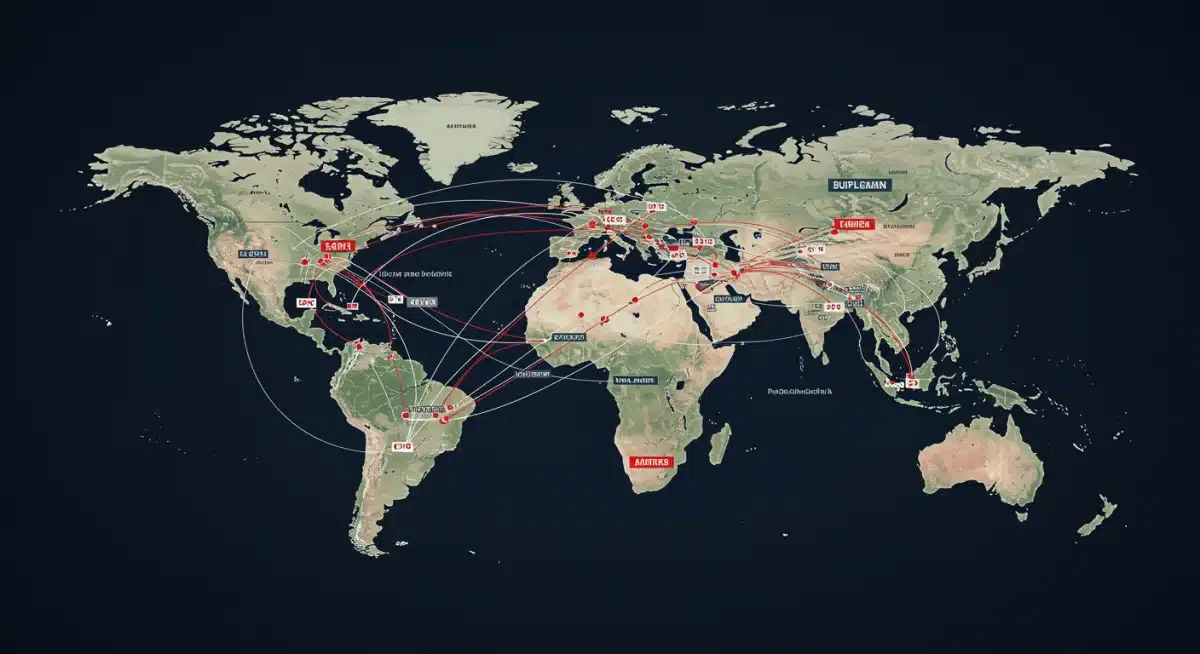
Moreover, the cost of re-shoring itself is a significant financial hurdle. Setting up new domestic production lines, investing in advanced machinery, and training a skilled workforce requires substantial upfront capital. These investments, while potentially beneficial in the long run, will add to the short-to-medium term financial strain on automotive companies already grappling with increased import costs. The transition period is expected to be costly and fraught with logistical complexities.
As companies navigate these disruptions, they will also face increased administrative burdens associated with tariff compliance, customs declarations, and navigating complex trade regulations. These additional operational costs, though indirect, will further impact the financial bottom line. The quest for supply chain resilience will become a central strategic imperative.
Impact on Consumer Prices and Vehicle Affordability
The financial burden of the new US auto parts tariffs will inevitably trickle down to consumers, leading to an increase in vehicle prices and potentially impacting overall affordability. When manufacturers face higher costs for imported components or the expense of re-shoring production, these costs are typically passed on to the end-user. This means that both new and used vehicles could see significant price hikes starting in 2025.
Economists at the Center for Automotive Research (CAR) project that a 25% tariff on imported auto parts could add an average of $1,500 to $2,500 to the cost of a new vehicle, significantly dampening consumer demand. For some models with a higher proportion of imported components, this increase could be even more substantial. Such price escalations would likely dampen consumer demand, particularly in price-sensitive segments of the market, potentially leading to a slowdown in new vehicle sales.
Consumer-Facing Financial Consequences
- Higher Purchase Prices: New cars will become more expensive, potentially pushing some buyers out of the market.
- Increased Maintenance Costs: Tariffs on replacement parts will raise the cost of vehicle repairs and maintenance for existing car owners.
- Reduced Affordability: The overall cost of vehicle ownership will increase, impacting household budgets and potentially leading to longer vehicle retention periods.
Beyond new vehicle purchases, the tariffs will also affect the aftermarket for auto parts. Replacement parts for repairs and maintenance, many of which are imported, will become more expensive. This will directly impact vehicle owners, leading to higher repair bills and potentially influencing decisions on whether to repair older vehicles or purchase new ones. The cumulative effect could be a decrease in the overall affordability of owning and maintaining a vehicle in the US.
Ultimately, the consumer will bear a significant portion of the financial impact. This makes it crucial for policymakers to consider the broader economic consequences on household budgets and the automotive market’s health.
Strategic Adjustments and Investment Opportunities
In response to the new US auto parts tariffs, automotive companies are already strategizing significant adjustments to their operations, which in turn creates new investment opportunities within the domestic market. While the tariffs present challenges, they also serve as a catalyst for innovation and the development of a more robust domestic manufacturing base. Companies will need to critically assess their current geographical footprint and consider strategic shifts.
One primary adjustment involves accelerating investments in automation and advanced manufacturing technologies within the United States. To offset the higher labor costs associated with domestic production, manufacturers will likely deploy more robotics, AI-driven processes, and other Industry 4.0 solutions. This drive towards technological advancement will not only enhance efficiency but also create new jobs in high-tech manufacturing sectors, shifting the skill requirements for the automotive workforce.
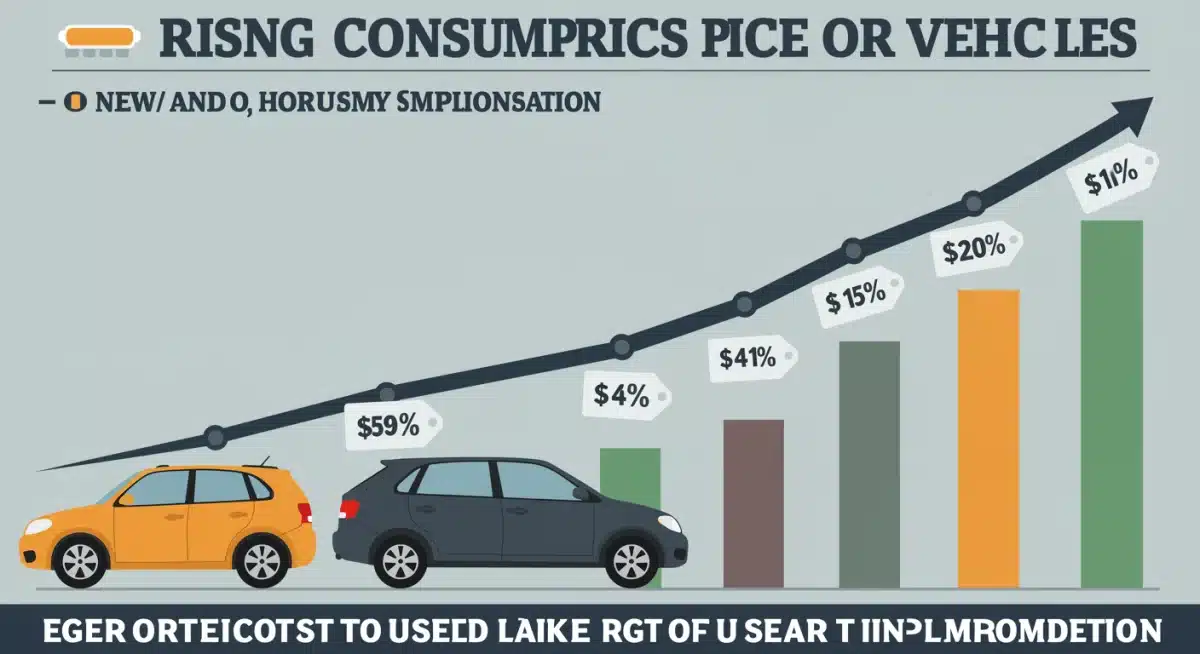
Furthermore, there will be a renewed focus on regionalization of supply chains, moving away from distant global sourcing to closer, more agile networks within North America. This could involve increased collaboration with Mexican and Canadian suppliers, leveraging existing trade agreements like the USMCA, or establishing new production facilities within the US. Such a shift would require significant capital expenditure, but it promises greater supply chain resilience and reduced exposure to future geopolitical trade disruptions.
The tariffs could also spur innovation in material science and product design, as companies seek to reduce their reliance on specific imported components by developing alternative materials or integrating parts differently. This environment fosters a unique opportunity for domestic startups and research institutions specializing in advanced materials and manufacturing processes to gain significant traction and investment.
These strategic adjustments, though demanding, are essential for long-term competitiveness and present a dynamic landscape for investment and technological advancement within the US automotive sector.
Long-Term Economic Outlook and Policy Implications
The long-term economic outlook under the new US auto parts tariffs is complex, with policy implications extending beyond the immediate financial impact on the automotive industry. While the tariffs aim to strengthen domestic manufacturing and reduce trade deficits, their sustained application could lead to broader economic shifts, influencing inflation, trade relations, and technological advancement in the US.
One key long-term implication is the potential for sustained inflationary pressure. As manufacturing costs rise due to tariffs and re-shoring efforts, these increases are likely to be passed on to consumers across various sectors, not just automotive. This could contribute to a higher overall cost of living and potentially influence monetary policy decisions by the Federal Reserve. The balancing act between protecting domestic industries and controlling inflation will be a critical policy challenge.
Broader Economic and Policy Considerations
- Inflationary Risks: Persistent higher costs for goods could lead to broader inflationary trends.
- Trade Relations: Tariffs may provoke retaliatory measures from trading partners, complicating international commerce.
- Innovation and Competitiveness: While re-shoring aims to boost domestic innovation, higher costs could impede the industry’s global competitiveness in advanced automotive technologies.
Furthermore, the tariffs could significantly alter international trade relations. While the US seeks to level the playing field, other nations may view these tariffs as protectionist measures, leading to retaliatory tariffs on American exports. This could negatively impact other US industries that rely on global markets, creating a cycle of trade disputes that undermines overall economic growth. The long-term success of this policy will depend heavily on diplomatic engagement and the ability to forge new, mutually beneficial trade agreements.
From a technological standpoint, the tariffs could accelerate the adoption of automation and advanced manufacturing within the US, making domestic production more competitive in the long run. However, there is also a risk that increased costs could divert resources away from research and development in critical areas like electric vehicle technology and autonomous driving, potentially slowing the pace of innovation. Policymakers will need to carefully monitor these dynamics to ensure the tariffs achieve their intended goals without inadvertently harming other strategic objectives.
Ultimately, the long-term success of these tariffs will hinge on their ability to foster a resilient and competitive domestic automotive industry without imposing undue burdens on consumers or jeopardizing broader economic stability and international trade relationships.
Key Aspect |
Financial Implication |
|---|---|
Manufacturing Costs |
Significant increase due to higher import duties and re-shoring expenses. |
Supply Chain |
Disruption, necessitating re-evaluation and potential domestic sourcing, leading to new logistical costs. |
Consumer Prices |
Expected increase in new vehicle and aftermarket part prices, impacting affordability. |
Investment Opportunities |
Stimulus for domestic manufacturing, automation, and regional supply chain development. |
Frequently Asked Questions About US Auto Parts Tariffs
The primary goals are to strengthen domestic manufacturing, reduce reliance on foreign supply chains, and enhance national economic security. By making imported parts more expensive, the policy aims to incentivize US-based production and job creation within the automotive sector.
Industry analyses suggest new cars could become significantly more expensive, with estimates ranging from $1,500 to $2,500 per vehicle. These increased costs, stemming from higher import duties on components, will likely be passed on to consumers.
Manufacturers face increased input costs, disruptions to established supply chains, and the financial and logistical challenges of re-shoring production. Finding suitable domestic suppliers quickly and cost-effectively will be a major hurdle.
The tariffs are intended to spur job growth in domestic manufacturing. However, the extent of this growth may be offset by increased automation and the time required to establish new production capabilities, creating a shift in the types of jobs available.
The aftermarket will likely see higher prices for replacement parts, as many are imported. This could increase the cost of vehicle repairs and maintenance for consumers, potentially influencing decisions on vehicle longevity and new purchases.
What Happens Next
The introduction of new US auto parts tariffs in 2025 marks a pivotal moment for the US automotive industry. What happens next will be a complex interplay of corporate adaptation, consumer response, and ongoing policy adjustments. Industry stakeholders must closely monitor the phased implementation, evaluate the effectiveness of re-shoring incentives, and anticipate potential shifts in global trade dynamics. The coming months will reveal the true extent of these financial impacts and shape the future competitiveness of American automotive manufacturing.
